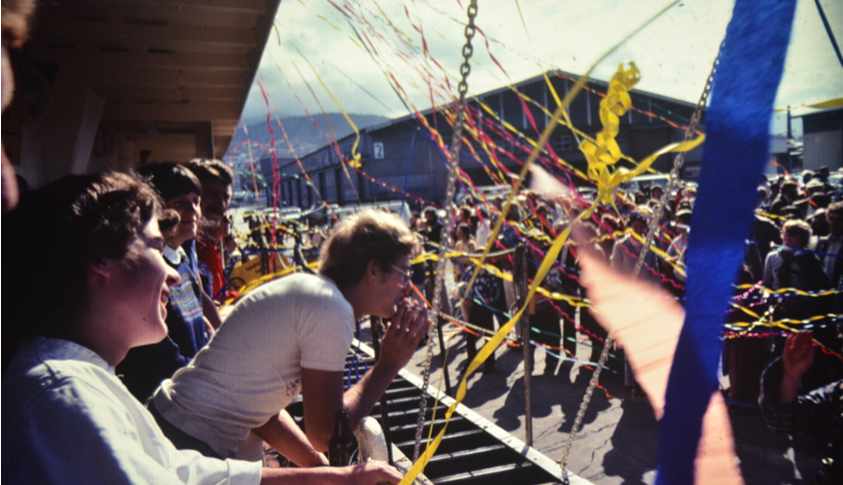On board
Nella Dan is remembered in the many stories about comradeship and the experiences that ensue when as many as 90 very different people spend prolonged periods of time together in a very cramped environment, taking care of all the daily chores and routines, from the sump to the monkey island. Whether you’re a ship’s boy or a donkeymen, a radio operator or a ship’s mate. In addition to the daily routines aimed at getting Nella to her destination on time, the ship was full of people tasked with counting birds, spotting whales, performing autopsies on krill, drawing and recording everything, while LARCies and chopper pilots sat ready, waiting to be called up.
This bustling everyday schedule unfolded under external conditions that stretches the horizon to infinity and tests the laws of physics, challenges human body chemistry and pushes mental boundaries. A bustling human menagerie and melting pot.
We collect the big stories but are equally interested in the little stories about everyday events, routines and descriptions of life on board. In words and images, we bring you the inside story of Nella Dan as depicted through routines, situations and everyday chores.
We hope to bring you many more little insights into life on board.
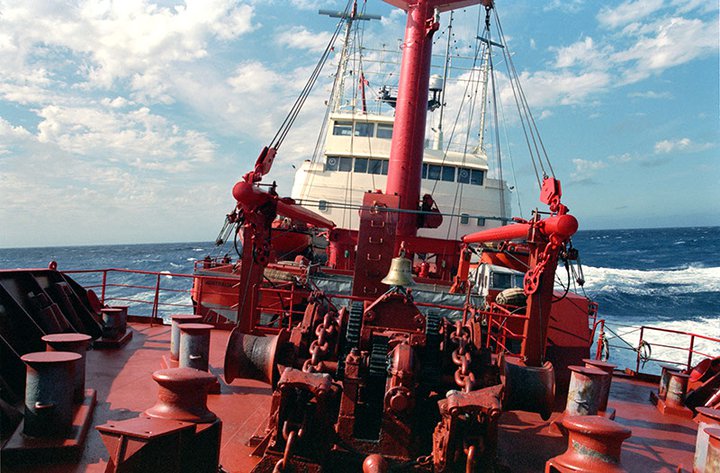
Photo by Sam Nitschke
‘The gangway’
Whether you were 16 years old, signing on for the first time, or the proverbial “old man and the sea” returning home after a few months ashore, or whether you were about to winter on the South Pole or count krill in subantarctic waters, everyone who showed up at the gangway for the first time always felt the tingle of anticipation and apprehension. Nella Dan offered adventure at a time when distances were still daunting and post took months to reach the recipient.
(Click here to see Greg Young’s film from the ship’s departure)
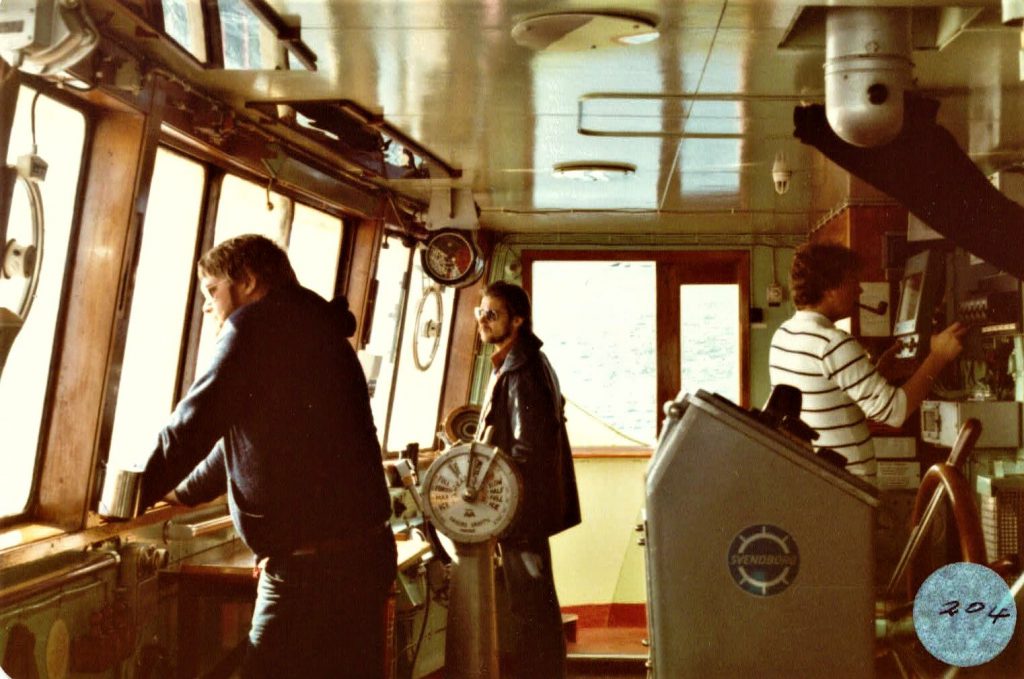
Joanne Verikios' archive
‘The bridge’
A ship is commanded from the bridge. This is also where all information about what is happening on board ultimately ends up.
‘Olga/ the main engine’
(Watch the brief presentation on the left)
‘The galley’
It is no easy task to prepare three daily meals, with multiple courses, for 90 crew and passengers – especially when passengers and crew are served separate menus, doubling the workload.
With changing of the watch, varying work routines, heavy sea and the seamen’s union’s strict requirements for the accommodations provided to Danish sailors as further challenges, the cook, junior cook and baker were actually running a fully equipped restaurant under cramped and taxing conditions.
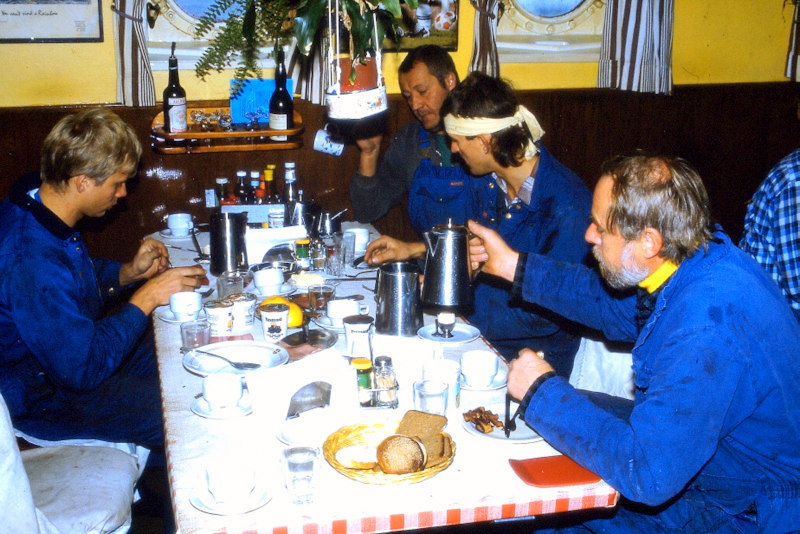
“Messen”
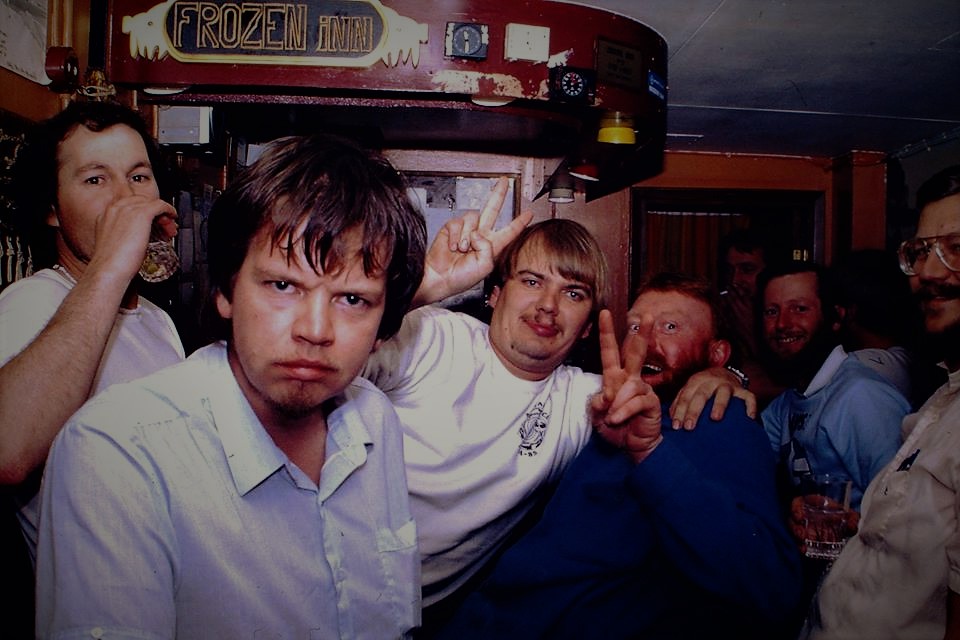
Photo by Brian Jury
‘Frozen Inn‘
The crew’s refuge, ‘Frozen Inn’, was constructed in 1982, as a conversion of a passage connecting the chambers in the sump. It soon became a regular meeting place for off-duty crew members. It was also a hotbed of pranks, tall tales and gossip. Like a village pump in the middle of the ocean, where excitement often made events splash over the fiddle on the bar.
It is reported that guests and passengers on board were barred from the Frozen Inn by their expedition leaders.
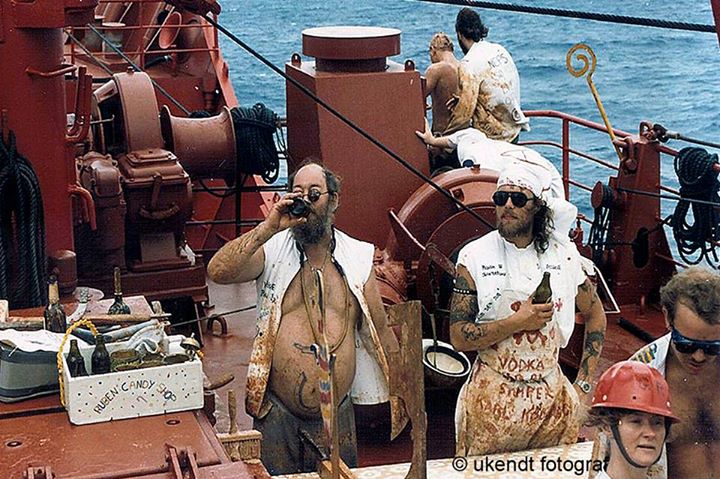
Photo by Henrik Hartlev Jeppesen
‘Line-crossing ceremony’
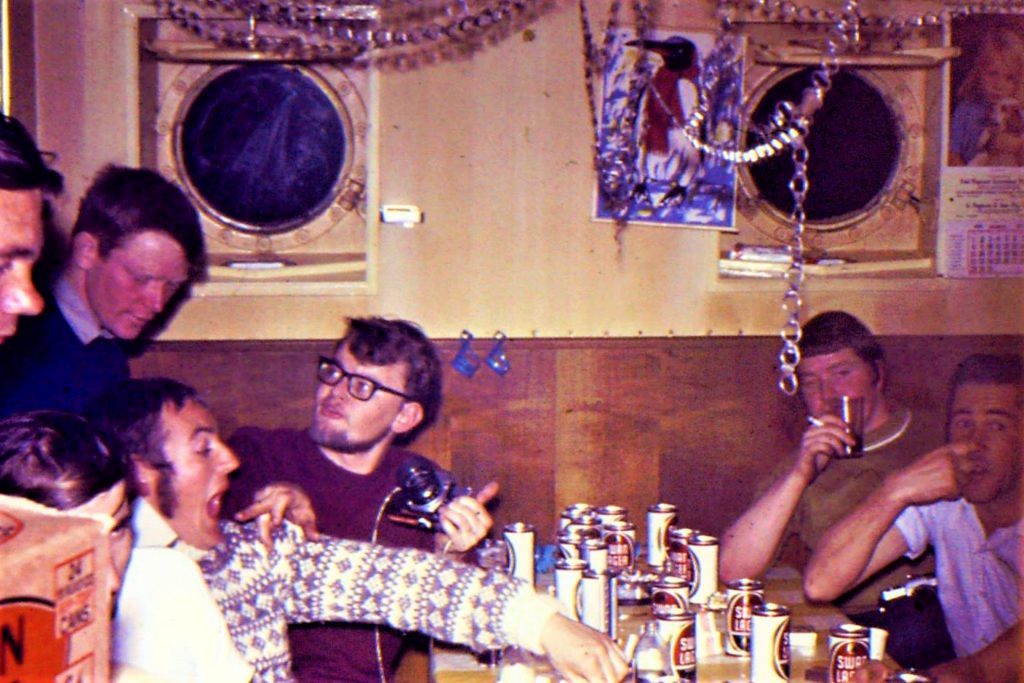
Photo by Poul Frydensberg Sørensen
“Selskabelighed”
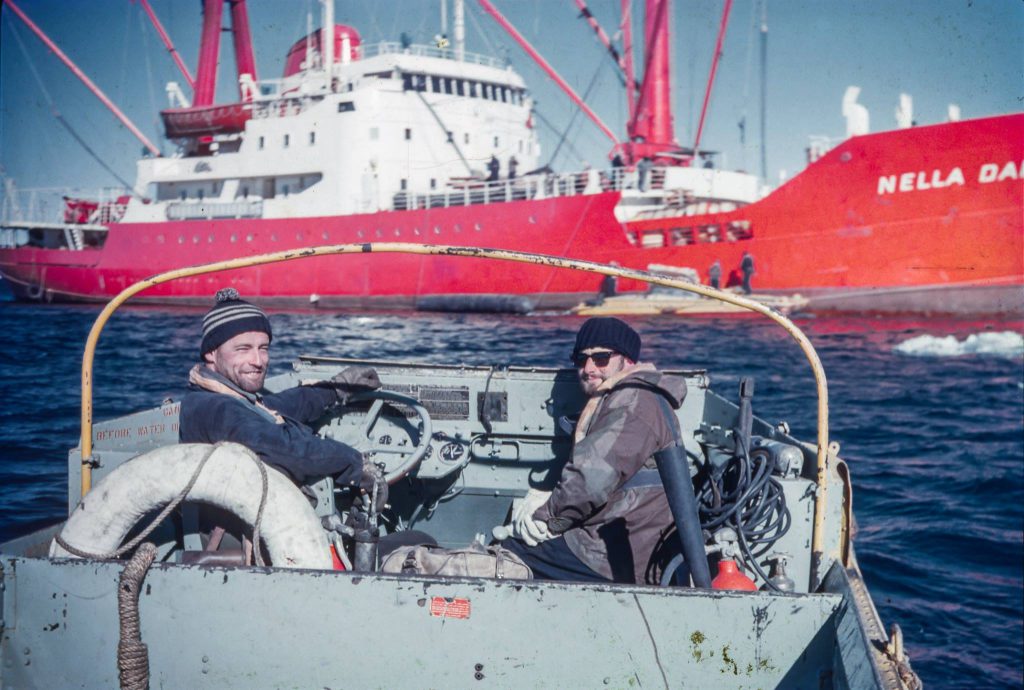
“Buddies”
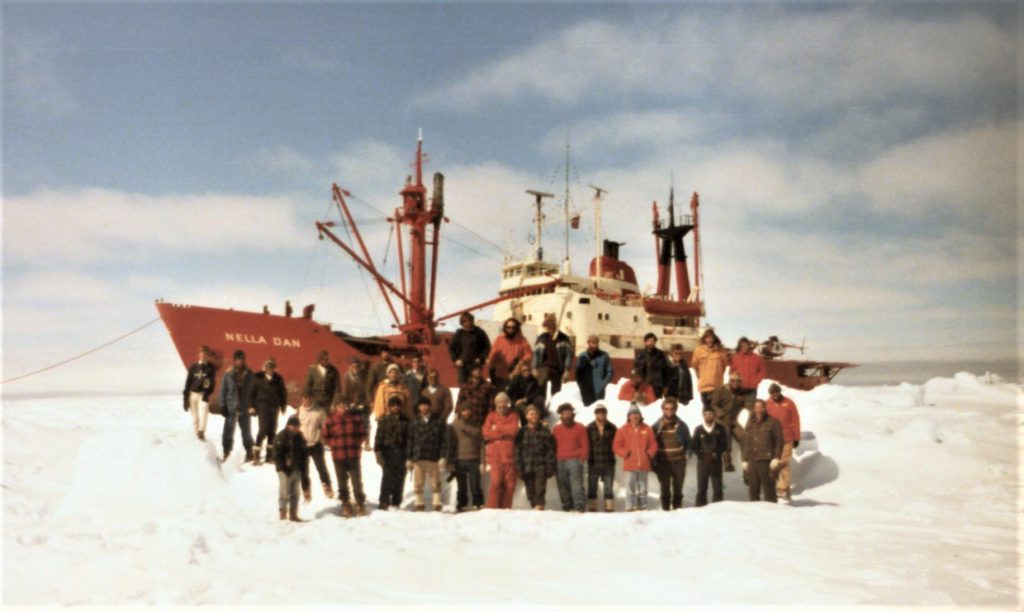
“Crew’et”
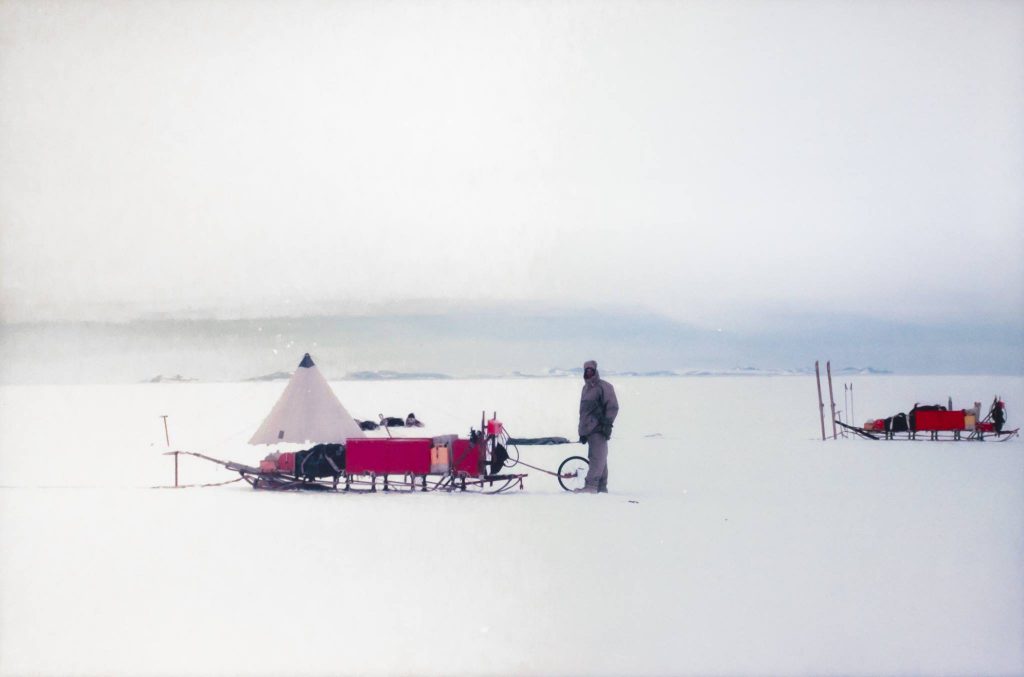
“Wintering”
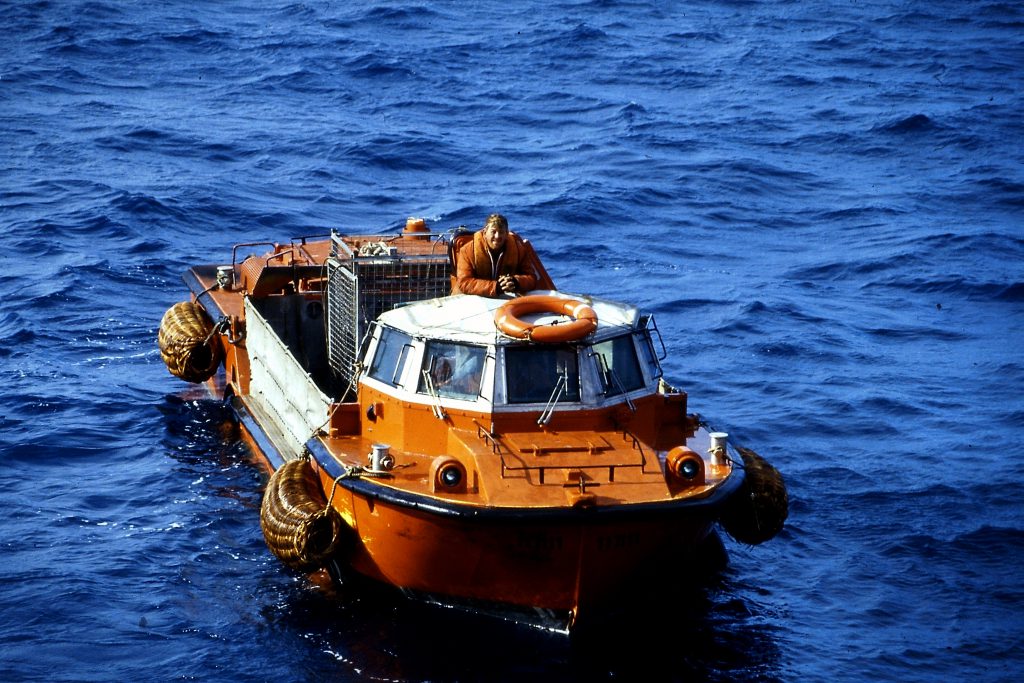
‘LARC’
A LARC 5 (Lighter Amphibious Resupply Cargo, 5 ton) is an amphibious vehicle with an aluminium body and a 5-ton cargo capacity. Originally developed in the 1950s in the United States and later put to use by several nations for both military and civilian purposes. The LARC is still used today for both cargo and passengers.
Nella Dan would typically carry two to three LARCs for delivering supplies to the stations. The LARCs were operated by Australian SAS soldiers.
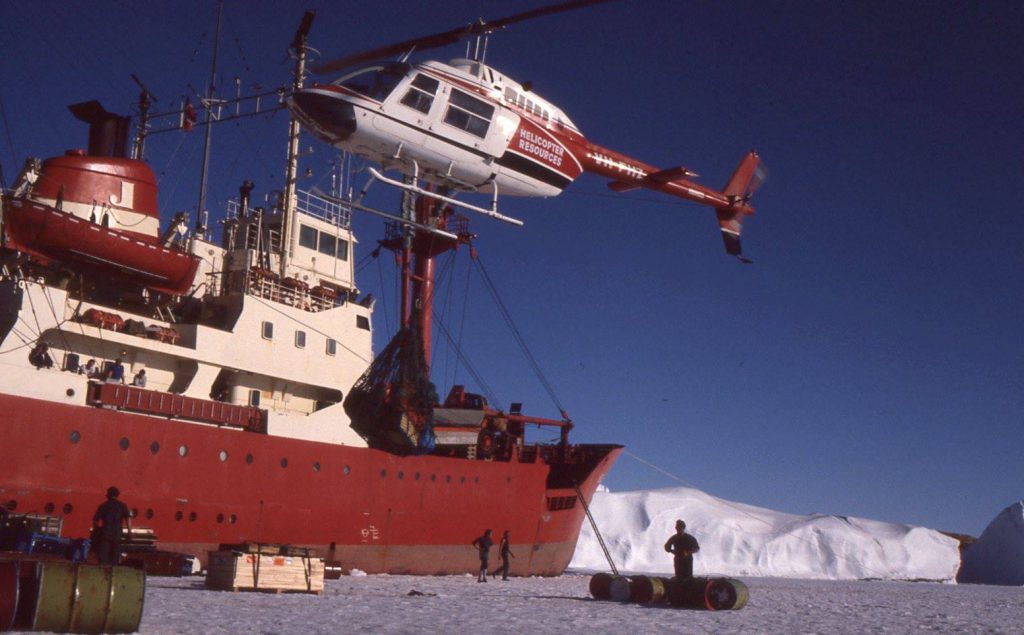
‘Chopper’
Nella Dan would carry up to three helicopters. Especially on trips to the ice where the choppers were needed for ice reconnaissance and unloading supplies at the ice edge.
Since the 1960s, several different models were in use, often crewed by ex-military pilots.

